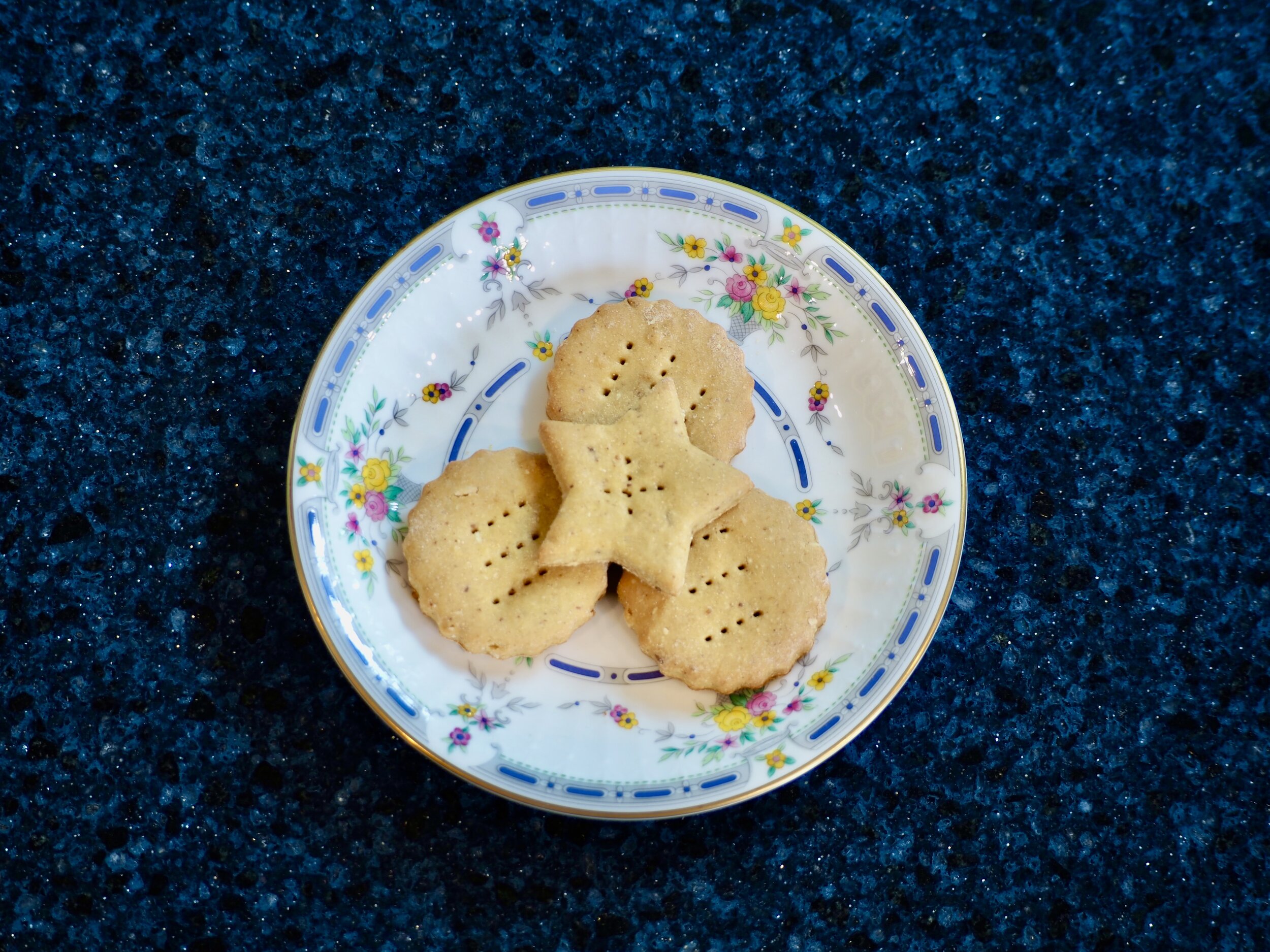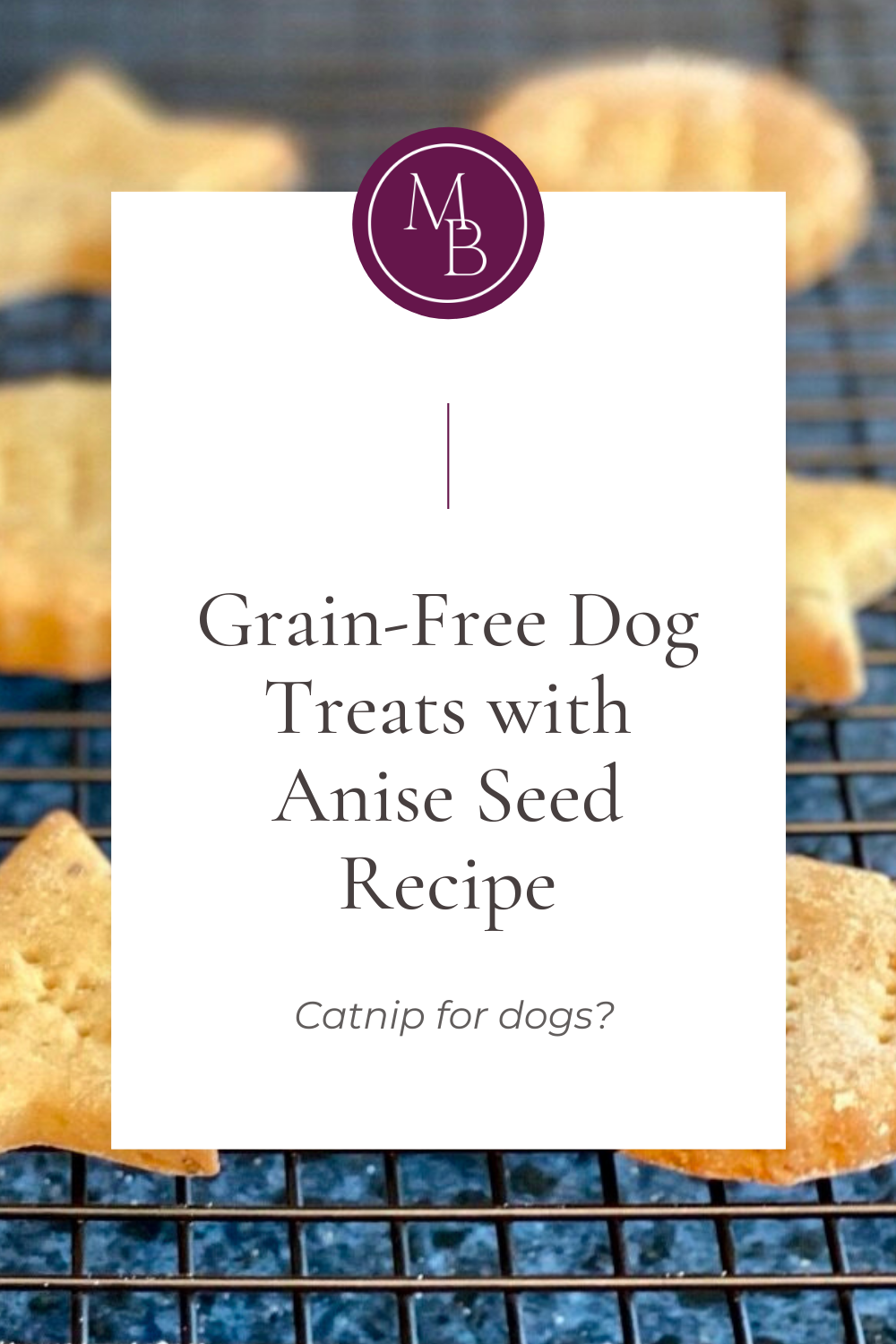Catnip for Dogs? Grain-Free Dog Treats with Anise Seed Recipe
I was sprinkling catnip on Ivy’s scratching post this morning when a thought struck me — is there such a thing as dognip? It didn’t seem fair for Crumpet to miss out on all the fun, so I decided to do some research. Is there an herb that has the same intoxicating effect on our canine companions?
I discovered that while there is no identical equivalent, anise seed or aniseed (not to be confused with star anise) is very attractive to dogs. The seeds have a strong licorice scent and taste that most dogs find exciting. Anise seed has long been used as a training tool and is a common ingredient in many dog treats. The seeds are safe to consume in small quantities and can be sprinkled on food or included in homemade treats.
Photo by OutsidePride
Photo by OutsidePride
Anise is easily grown and makes an attractive addition to an herb garden. If you don’t wish to grow your own, you can easily find anise seed in the spice section of your local market or online.
I decided to conduct an experiment with one of Crumpet’s favorite treat recipes. (See recipe below). I divided the dough in half and set one half aside (the control batch). I kneaded ¾ teaspoon of whole anise seeds into the remaining half. I planned to crush the seeds before adding them, but I misplaced my mortar and pestle when we moved to our new home, so I just tossed them in whole.
I used a 2” fluted circular cutter for the control batch and a star cutter for the batch with anise seed so I could easily tell them apart.
When the cookies had cooled, I set one of each in front of Crumpet to see which he preferred. He gave each cookie a good sniff and gulped down the one with anise seed. It was the clear favorite!
I’m not sure that anise seed is the equivalent of catnip, but Crumpet certainly loved it. I will definitely be adding it to my dog treat recipes in the future!
Grain-Free Dog Treats with Anise Seed
Prep Time: 10 minutes
Cook Time: 15 minutes
Total Time: 25 minutes
Servings: Approximately 30 treats, depending on the size of your cookie cutters.
Ingredients
½ medium banana
1 large egg*
¼ cup creamy peanut butter (make sure that it does not include xylitol)
⅔ cup chickpea (garbanzo bean) flour
⅛ teaspoon baking soda
1 ½ teaspoon anise seeds, whole, crushed, or ground
Extra chickpea flour for rolling out dough
Small cookie cutters
* If your dog is allergic to eggs, you may use one of the following substitutions for each egg: ½ banana or ½ cup unsweetened applesauce or 1 tablespoon of ground flax seed with 3 tablespoons of water.
Directions
Preheat the oven to 350 degrees F.
In a medium bowl, mash the banana with a fork until smooth. Add egg and peanut butter and blend until the mixture is smooth.
In a separate bowl, combine the chickpea flour, coconut flour, baking soda and anise. Add to the wet ingredients and mix until the dough comes together.
Dust your work area with chickpea flour and finish kneading the dough until it is smooth. You may need to add more flour to achieve the right consistency. If the dough is too stiff, add a few drops of water.
Dust the work area and rolling pin with chickpea flour and roll out the dough to ¼ inch thick.
Cut the dough into the desired shapes. You may wish to dip the cutters in flour before cutting to prevent sticking. Arrange the cookies on a parchment lined baking sheet.
Poke holes in the cookies with a small fork so they bake evenly. (A cocktail fork is ideal for this purpose).
Bake at 350 degrees for 15 minutes. Cool completely before serving to your dog.
Feel free to double the batch if you have a larger dog. These cookies keep well for up to 7 days in a sealed container. They can also be frozen for up to 3 months.












